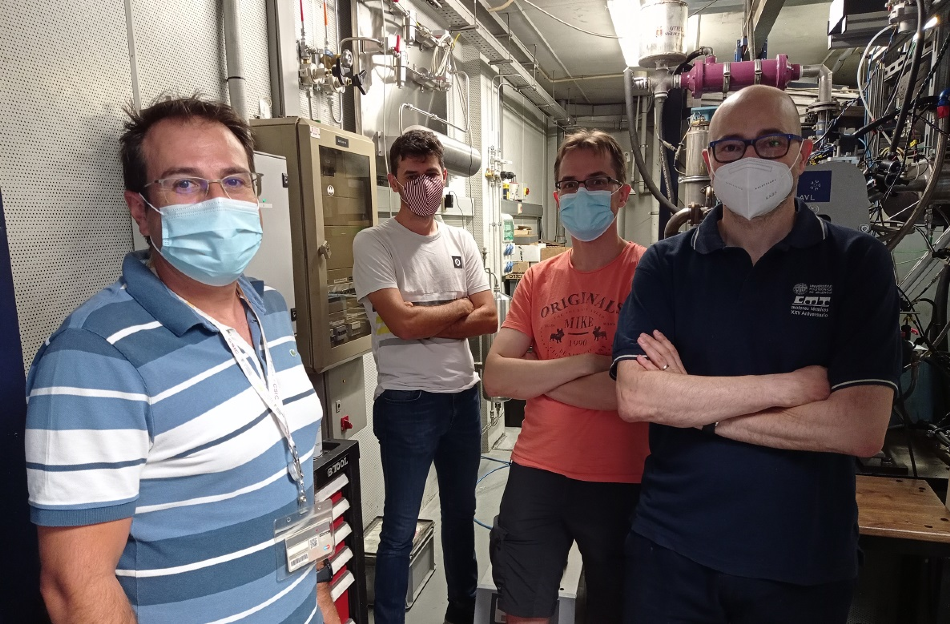Aug 26 2020
Scientists from the Polytechnic University of Valencia (UPV) have now developed a novel internal combustion engine that does not produce carbon dioxide (CO2) or gases that are dangerous to human health.

Image Credit: RUVID.
This “revolutionary” engine, according to its developers, has excellent efficiency and fulfills the regulation on emission standards scheduled for 2040. Thanks to the financial support extended by the Valencian Agency for Innovation, the first two models of the internal combustion engine will soon become a reality in the next few months.
The novel technology, used by the researchers to achieve this latest breakthrough, is based on applying MIEC ceramic membranes.
These MIEC ceramic membranes, patented by the Institute of Chemical Technology—a joint center of the CSIC and UPV—trap their own CO2 and the environmental CO2 and subsequently liquefy it, eliminating all contaminating gases that are detrimental to human health (NOx).
These membranes, included in the engine of the vehicle, enable the selective separation of oxygen from the air to produce the oxycombustion. This way, a pure combustion gas is generated, composed of water and CO2, which can be captured inside the vehicle and stored, without having it expelled from the exhaust pipe.
José Manuel Serra, Researcher, The Institute of Chemical Technology (UPV-CSIC)
“This way, the technology developed by this team of researchers will make it possible to have an engine with the autonomy and refuelling capabilities of a conventional one, but with the advantage of being completely clean, without any type of contaminating or greenhouse effect emission, just like electric engines,” stated Luis Miguel García-Cuevas González.
“Therefore, we offer the sector a technology that combines the best of both types of engines, electric and combustion,” García-Cuevas González further added.
A Tank for Fuel ... and Another for CO2
With the novel technology designed by CMT-Thermal Motors and the Institute of Chemical Technology (ITQ), the vehicle also turns out to be a supplier of the CO2 gas.
As explained by the team, in the case of a traditional engine, a huge quantity of nitrogen and nitrogen oxides are produced in the exhaust pipe following oxy-combustion. But in this example, only water and an extremely high concentration of CO2 gas are produced, which can be effortlessly isolated from the CO2 gas by simply condensing it.
This CO2 is compressed inside the engine and is stored in a pressure tank, which could be returned as a by-product, directly as pure high-quality CO2, in a service station, for an industrial use. This way, inside the vehicle we would have a tank for fuel and another for the CO2 that is generated after burning the fuel and which we could draw value from.
Luis Miguel García-Cuevas, Polytechnic University of Valencia
The unique technology is primarily targeted at manufacturers of large vehicles used for ferrying goods and passengers, both on sea and land, and also for aviation applications up to a specific level of power. Besides these applications, the technology could even be used to convert existing diesel engines into unique vehicles.
“In the case of smaller vehicles, it could also be applied by sequestering only part of the CO2 in the exhaust,” stated Francisco José Arnau, a fellow researcher from UPV’s MT-Thermal Motors.
Prototype Funded by the Valencian Agency for Innovation
The UPV team is now building a pair of models of this “revolutionary system for the automotive sector” on a laboratory scale, with financial support from the Valencian Agency for Innovation.
Undertaken by the CMT-Thermal Motors and the ITQ (INNVA1/2020/82), the study is one of the many projects selected in the aid scheme of the Programme for the Valorisation and Transfer of Research Results to Companies, the adjudication of which was disclosed in July 2020.
Having the positive valuation and funding of the Valencian Agency for Innovation entails being able to take the concept to high levels of technological development. With this, it will be possible to attract the attention of private investors who want to license the patent or fund spin-offs to make these engines a reality, which would change the paradigm of the fight against climate change from the viewpoint of transportation.
José Ramón Serrano, Researcher, CMT-Thermal Motors, Polytechnic University of Valencia